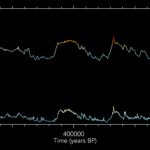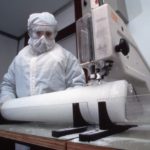SIWHA
Sea Ice and Westerly winds during the Holocene in coastal Antarctica (SIWHA)
- Start date
- 1 November, 2021
- End date
- 30 December, 2027
The NERC funded SIWHA_CO2 project “Sea Ice and Westerly winds during the Holocene in coastal Antarctica, to better constrain oceanic CO2 uptake” will be a breakthrough in our understanding of how westerly winds and sea ice have influenced the uptake or release of CO2 at decadal to millennial timescales.
Scientific objectives of SIWHA_CO2:
- Drill a ~700m ice core in the Antarctic Peninsula, spanning the full Holocene (~10,000 years)
- Quantify the variability in westerly winds and sea ice in the Pacific sector of the Southern Ocean.
- using traditional and novel ice core proxies.
- Quantify the variability of atmospheric CO2 during the Holocene.
- spanning both pre and post industrialisation (1850).
- Determine the influence of westerly winds and sea ice on atmospheric CO2 concentration.
- at multi-decadal resolution over the past 11,000 years.
- Establish long-term linkages of winds and sea ice with extratropical and/or tropical climate modes and oscillations.
- on a decadal to multi-decadal scale.
Scientific rationale
The Southern Ocean currently absorbs over 40% of the anthropogenic carbon dioxide (CO2) and 75% of the anthropogenic heat from the atmosphere. However, the Southern Ocean can also release CO2. The extent to which the ocean will act as a source or sink of anthropogenic CO2 in the future is unknown. This constitutes one of the biggest uncertainties facing society today. The SIWHA project will be a breakthrough in our understanding of CO2 exchange in the Southern Ocean. Determining how westerly winds and sea ice have influenced the uptake or release of CO2 at decadal to millennial timescales.
Project plan and deliverables:
- Geophysical survey and ice core drilling
Conduct geophysical surveys (November 2024) to identify the most suitable site for deep drilling. Measure bed topography, englacial stratigraphy, ice rheology, and ice-flow fields. Directly measure past ice deformation during burial to constrain the ice core age-scale. Use the BAS electromechanical deep drill to reach bedrock ~800 m (2025/2026).
- Wind reconstructions
Marine diatoms are unicellular algae with siliceous cell walls. Diatoms are uplifted from the sea-surface microlayer and transported by winds over the ice sheet. The diatom abundance measured in an ice core is dependent on the strength of the winds. We will use this diatom abundance as a proxy to reconstruct past wind strength and atmospheric circulation. We will also use traditional wind proxies, including dust and continental ions.
- Greenhouse gas analysis
The new high snow accumulation ice core will provide the first complete record of greenhouse gases (carbon dioxide and methane) spanning the entire Holocene (>11,000 years). The analysis will be completed in the newly developed UK Relic Air Extraction and Gas Analysis System (UK RArE-GAS) laboratories at BAS. The bubble close-off at this site is very rapid. Providing a unique opportunity to measure gas records that overlap with the instrumental data.

